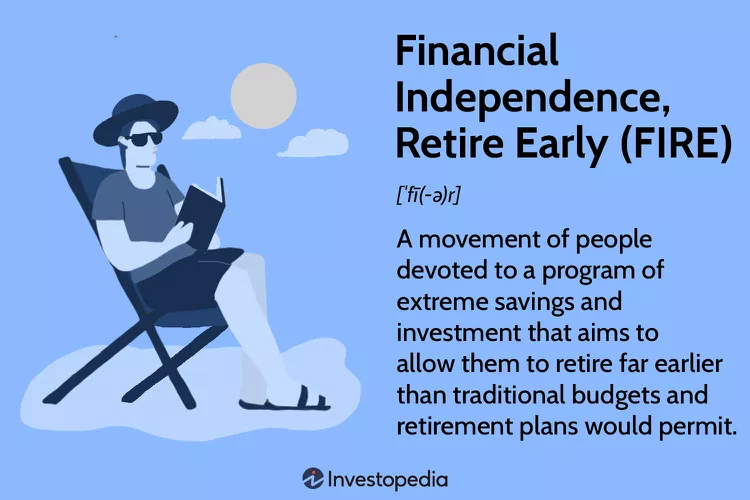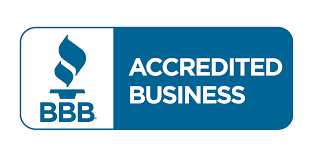Early Retirement Age in Canada (2025): CPP, OAS & Alternative Income Guide & Strategies
Table of Contents
Early Retirement Age in Canada: When Can You Actually Stop Working?
Retirement looks different for every Canadian. Some dream of stepping away from the 9-to-5 in their 50s, while others plan to continue working well into their 70s. But when we talk about the early retirement age in Canada, the question is really: When can you actually afford to stop working – and what do government rules allow?
The answer depends on a combination of factors: government pensions (CPP and OAS), workplace pensions, personal savings, and increasingly, alternative income streams.
Official Early Retirement Ages in Canada
Canada doesn’t have a single “official” retirement age. Instead, it depends on which source of retirement income you’re relying on.
Early Retirement Age in Canada: When Can You Actually Stop Working?
Retirement looks different for every Canadian. Some dream of stepping away from the 9-to-5 in their 50s, while others plan to continue working well into their 70s. But when we talk about the early retirement age in Canada, the question is really: When can you actually afford to stop working – and what do government rules allow?
The answer depends on a combination of factors: government pensions (CPP and OAS), workplace pensions, personal savings, and increasingly, alternative income streams.
Official Early Retirement Ages in Canada
Canada doesn’t have a single “official” retirement age. Instead, it depends on which source of retirement income you’re relying on.
Understanding Canada’s Two Government Pensions
Canada Pension Plan (CPP) Explained
- A pension you earn through working and making contributions.
- The more you earn and contribute during your working years (up to the annual CPP maximum), the larger your CPP payment.
- You can start as early as age 60 or delay until 70.
- Your benefit amount depends on how much you contributed over your career.
Old Age Security (OAS) Explained
- A pension you typically qualify for simply by living in Canada long enough (10+ years after age 18).
- Everyone gets roughly the same amount regardless of work history.
- You can only start at age 65 (no early option).
- Can be clawed back if your retirement income is too high.
Key difference: CPP is like a workplace pension you paid into; OAS is a residency-based benefit.
No Minimum Age: Personal Savings Retirement
If you’ve built enough personal wealth – through RRSPs, TFSAs, or non-registered investment accounts – you can technically retire at any age, even in your 40s or earlier. This is where the FI/RE (Financial Independence, Retire Early) movement and real estate investing intersect.
Want to learn how to reach financial independence or retire earlier (FI/RE)? We explore this and more in detail in the latter half of this section.
Canada Pension Plan (CPP) Early Retirement at 60
CPP is a cornerstone of most Canadians’ retirement income. But taking it early comes with trade-offs.
CPP Reduction Penalties: 36% Maximum Decrease
If you start CPP at 60, your payments are reduced by 0.6% per month before age 65. That’s a 36% reduction if you take it the moment you turn 60.
For example, if your CPP benefit at 65 would be $1,000/month, taking it at 60 drops it to $640/month — for life.
Understanding Canada’s Two Government Pensions
Canada Pension Plan (CPP) Explained
- A pension you earn through working and making contributions.
- The more you earn and contribute during your working years (up to the annual CPP maximum), the larger your CPP payment.
- You can start as early as age 60 or delay until 70.
- Your benefit amount depends on how much you contributed over your career.
Old Age Security (OAS) Explained
- A pension you typically qualify for simply by living in Canada long enough (10+ years after age 18).
- Everyone gets roughly the same amount regardless of work history.
- You can only start at age 65 (no early option).
- Can be clawed back if your retirement income is too high.
Key difference: CPP is like a workplace pension you paid into; OAS is a residency-based benefit.
No Minimum Age: Personal Savings Retirement
If you’ve built enough personal wealth – through RRSPs, TFSAs, or non-registered investment accounts – you can technically retire at any age, even in your 40s or earlier. This is where the FI/RE (Financial Independence, Retire Early) movement and real estate investing intersect.
Want to learn how to reach financial independence or retire earlier (FI/RE)? We explore this and more in detail in the latter half of this section.
Canada Pension Plan (CPP) Early Retirement at 60
CPP is a cornerstone of most Canadians’ retirement income. But taking it early comes with trade-offs.
CPP Reduction Penalties: 36% Maximum Decrease
If you start CPP at 60, your payments are reduced by 0.6% per month before age 65. That’s a 36% reduction if you take it the moment you turn 60.
For example, if your CPP benefit at 65 would be $1,000/month, taking it at 60 drops it to $640/month — for life.
Retirement Planning Made Easy With Private
Real Estate Investments
Retirement Planning Made Easy With Private
Real Estate Investments
CPP Reduction Penalties: How the Math Actually Works
If you start CPP before age 65, your payments are permanently reduced by 0.6% for every month before your 65th birthday.
Here’s what that means in real terms:
Start CPP at age 60?
- You’re starting 60 months (5 years) early
- 60 months × 0.6% = 36% reduction
- If your age-65 benefit would be $1,000/month, you’ll get $640/month instead
- This reduction is permanent – it doesn’t go back up when you turn 65
Start CPP at age 62?
- You’re starting 36 months (3 years) early
- 36 months × 0.6% = 21.6% reduction
- $1,000 benefit becomes $784/month
The math works the same way for delaying CPP past 65 – you gain 0.6% per month:
Delay CPP until age 70?
- You’re delaying 60 months (5 years)
- 60 months × 0.6% = 36% increase
- $1,000 benefit becomes $1,360/month
CPP Starting Age Impact Table:
| Age You Start CPP | Months Before/After 65 | Reduction/Increase | $1,000 Benefit Becomes |
|---|---|---|---|
| 60 | 60 months early | -36% | $640/month |
| 62 | 36 months early | -21.6% | $784/month |
| 65 | Standard age | 0% | $1,000/month |
| 67 | 24 months late | +14.4% | $1,144/month |
| 70 | 60 months late | +36% | $1,360/month |
When CPP Early Retirement Makes Sense
Taking CPP early may make sense if:
- You need income right away to bridge the gap to workplace pensions or savings.
- You plan to stop working at 60 and don’t want to dip heavily into RRSPs or TFSAs.
CPP Calculator and Benefit Estimates
Service Canada offers a CPP calculator that estimates your monthly payments at different ages. Reviewing this is essential for planning whether starting CPP at 60, 65, or deferring until 70 makes the most sense.
Old Age Security (OAS) and Early Retirement
Unlike CPP, you cannot start OAS early.
Why OAS Starts at 65 (No Early Option)
OAS payments begin at 65, provided you’ve lived in Canada for at least 10 years after age 18. There’s no early option – even if you retire before then.
Bridging the Gap from 60 to 65
If you retire at 60 and take CPP, you’ll have a 5-year gap until OAS begins. Many Canadians use RRSP withdrawals, TFSA savings, or rental income to cover this period.
If you retire at 60 and take CPP, you’ll have a 5-year gap until OAS begins. Many Canadians use RRSP withdrawals, TFSA savings, or rental income to cover this period.
Here’s how to think about each option:
RRSP withdrawals (ages 60-64):
If you have little or no employment income during these years, RRSP withdrawals can be relatively tax-efficient. A $35,000 RRSP withdrawal combined with $7,680 CPP (if taking at 60) keeps you under $43,000 total income – well within lower tax brackets in most provinces. Compare this to withdrawing the same amount at age 70 when you’d also have CPP, OAS, and possibly workplace pension income.
TFSA withdrawals (any age):
The gold standard for early retirement because they’re completely tax-free and don’t affect government benefits. If you’ve been maxing out TFSA contributions since 2009, you could have $95,000+ in contribution room (not counting growth). This can provide several years of tax-free retirement income.
Combining both:
Many early retirees use a mix – TFSAs for essential expenses to keep taxable income low, then strategic RRSP withdrawals to fill out lower tax brackets.
OAS Deferral Benefits: Up to 36% Increase
If you don’t need OAS at 65, you can defer up to age 70. Each month of deferral adds 0.6%, up to a maximum 36% increase at 70.
Provincial and Workplace Pension Early Retirement Ages
Government pensions aren’t the whole story. Workplace pensions can sometimes allow retirement even earlier.
Public Service Pension Plans: Age 55–60 Options
Federal and provincial public sector workers often have defined benefit plans allowing retirement between 55–60, sometimes with “unreduced pensions” if service requirements are met.
Private Employer Pension Rules
In the private sector, rules vary. Some allow retirement at 55, others require you to wait until 60, or impose actuarial reductions for leaving early.
Union and Professional Pension Early Retirement
Teachers, nurses, and unionized professions often have special pension arrangements. For example, many teachers’ pensions allow retirement in the late 50s with a reduced benefit.
CPP Reduction Penalties: How the Math Actually Works
If you start CPP before age 65, your payments are permanently reduced by 0.6% for every month before your 65th birthday.
Here’s what that means in real terms:
Start CPP at age 60?
- You’re starting 60 months (5 years) early
- 60 months × 0.6% = 36% reduction
- If your age-65 benefit would be $1,000/month, you’ll get $640/month instead
- This reduction is permanent – it doesn’t go back up when you turn 65
Start CPP at age 62?
- You’re starting 36 months (3 years) early
- 36 months × 0.6% = 21.6% reduction
- $1,000 benefit becomes $784/month
The math works the same way for delaying CPP past 65 – you gain 0.6% per month:
Delay CPP until age 70?
- You’re delaying 60 months (5 years)
- 60 months × 0.6% = 36% increase
- $1,000 benefit becomes $1,360/month
CPP Starting Age Impact Table:
| Age You Start CPP | Months Before/After 65 | Reduction/Increase | $1,000 Benefit Becomes |
|---|---|---|---|
| 60 | 60 months early | -36% | $640/month |
| 62 | 36 months early | -21.6% | $784/month |
| 65 | Standard age | 0% | $1,000/month |
| 67 | 24 months late | +14.4% | $1,144/month |
| 70 | 60 months late | +36% | $1,360/month |
When CPP Early Retirement Makes Sense
Taking CPP early may make sense if:
- You need income right away to bridge the gap to workplace pensions or savings.
- You plan to stop working at 60 and don’t want to dip heavily into RRSPs or TFSAs.
CPP Calculator and Benefit Estimates
Service Canada offers a CPP calculator that estimates your monthly payments at different ages. Reviewing this is essential for planning whether starting CPP at 60, 65, or deferring until 70 makes the most sense.
Old Age Security (OAS) and Early Retirement
Unlike CPP, you cannot start OAS early.
Why OAS Starts at 65 (No Early Option)
OAS payments begin at 65, provided you’ve lived in Canada for at least 10 years after age 18. There’s no early option – even if you retire before then.
Bridging the Gap from 60 to 65
If you retire at 60 and take CPP, you’ll have a 5-year gap until OAS begins. Many Canadians use RRSP withdrawals, TFSA savings, or rental income to cover this period.
If you retire at 60 and take CPP, you’ll have a 5-year gap until OAS begins. Many Canadians use RRSP withdrawals, TFSA savings, or rental income to cover this period.
Here’s how to think about each option:
RRSP withdrawals (ages 60-64):
If you have little or no employment income during these years, RRSP withdrawals can be relatively tax-efficient. A $35,000 RRSP withdrawal combined with $7,680 CPP (if taking at 60) keeps you under $43,000 total income – well within lower tax brackets in most provinces. Compare this to withdrawing the same amount at age 70 when you’d also have CPP, OAS, and possibly workplace pension income.
TFSA withdrawals (any age):
The gold standard for early retirement because they’re completely tax-free and don’t affect government benefits. If you’ve been maxing out TFSA contributions since 2009, you could have $95,000+ in contribution room (not counting growth). This can provide several years of tax-free retirement income.
Combining both:
Many early retirees use a mix – TFSAs for essential expenses to keep taxable income low, then strategic RRSP withdrawals to fill out lower tax brackets.
OAS Deferral Benefits: Up to 36% Increase
If you don’t need OAS at 65, you can defer up to age 70. Each month of deferral adds 0.6%, up to a maximum 36% increase at 70.
Provincial and Workplace Pension Early Retirement Ages
Government pensions aren’t the whole story. Workplace pensions can sometimes allow retirement even earlier.
Public Service Pension Plans: Age 55–60 Options
Federal and provincial public sector workers often have defined benefit plans allowing retirement between 55–60, sometimes with “unreduced pensions” if service requirements are met.
Private Employer Pension Rules
In the private sector, rules vary. Some allow retirement at 55, others require you to wait until 60, or impose actuarial reductions for leaving early.
Union and Professional Pension Early Retirement
Teachers, nurses, and unionized professions often have special pension arrangements. For example, many teachers’ pensions allow retirement in the late 50s with a reduced benefit.
Early Retirement Without Government Pensions
For Canadians without a generous workplace pension – or for those aiming to retire even earlier than 55 – government programs alone won’t cut it.
Self-Funded Retirement: Any Age Possible
If you’ve built up significant personal savings, you can technically retire at any age. The challenge is ensuring your money lasts.
Common self-funding vehicles include:
- RRSPs: Tax-deferred savings, accessible anytime but taxed as income when withdrawn.
- TFSAs: Tax-free withdrawals, extremely useful for early retirees.
- Non-registered investments: Stocks, ETFs, dividends, bonds, and alternative investments.
Private Investment Strategies for Age 55 Retirement
Some Canadians use an “RRSP meltdown” strategy, drawing down RRSPs in their late 50s/early 60s to bridge the gap until CPP and OAS begin. Others focus heavily on TFSAs for tax-free retirement income.
The FI/RE Movement in Canada: Financial Independence, Retire Early
The FI/RE movement (Financial Independence, Retire Early) has become a global trend, and Canadians are increasingly embracing it as an alternative to the traditional 65+ retirement model. The idea is simple: save and invest intentionally in your working years so you can leave the workforce decades earlier – sometimes in your 40s or 50s.
Why FI/RE Appeals to Canadians
With rising housing costs, job stress, and uncertainty around government pensions, many Canadians want greater control over their time and financial future. FI/RE may offer:
- Flexibility: You’re not tied to working until 65.
- Freedom: The option to travel, pursue passion projects, or even semi-retire.
- Security: A financial cushion that protects against unexpected events.
Approaches to FI/RE
There’s no one-size-fits-all FI/RE path. The most common variations are:
- Lean FI/RE: Living frugally and retiring with a modest lifestyle.
- Fat FI/RE: Retiring with a larger income cushion to maintain comfort.
- Barista FI/RE: Leaving your primary career but taking part-time or passion-driven work to supplement income.
Challenges of FI/RE in Canada
Retiring decades earlier than average is harder in Canada because of:
- High housing and living costs in major cities.
- Taxes on investment income, which can erode savings.
- Delayed government benefits (CPP at 60 earliest, OAS at 65), meaning you must self-fund for years.
That’s why cash-flowing investments are essential to making FI/RE work here.
Real Estate Income for Early Retirement
One of the most powerful tools for early retirement in Canada is real estate investing. Unlike CPP or OAS, which require waiting until your 60s, real estate income can start generating cash flow at any age.
Options include:
- Owning rental properties: Monthly rental income can cover expenses and create long-term equity growth.
- Private Real Estate Investment Funds: Hands-off investments in large-scale residential and commercial real estate, offering targeted monthly distributions.
- Commercial real estate: Long-term leases with professional tenants can provide monthly income.
Investment Strategies for Early Retirement
There’s no single “perfect” investment strategy for early retirement in Canada. The most successful early retirees typically use a diversified mix of investment vehicles, each serving a different purpose in their retirement income plan.
Common investment options for building early retirement income include:
- Stocks and equity ETFs: Long-term growth potential and dividend income
- Bonds and fixed income: Historical stability and predictable interest payments
- Mutual funds: Professional management and instant diversification
- GICs (Guaranteed Investment Certificates): Capital protection typically with modest returns
- Real estate: Rental income and appreciation potential
- Private Real Estate Funds: Real estate exposure without property management responsibilities
- Dividend-focused portfolios: Owning stocks that target regular dividend payments
- Index funds: Low-cost, passive market exposure
- Alternative investments: Private equity, infrastructure funds, or lending platforms
Most financial advisors recommend a balanced approach rather than being fully invested in one asset class. The right mix depends on your circumstances and is affected by things such as your age, risk tolerance, income needs, and timeline to retirement.
Early Retirement Without Government Pensions
For Canadians without a generous workplace pension – or for those aiming to retire even earlier than 55 – government programs alone won’t cut it.
Self-Funded Retirement: Any Age Possible
If you’ve built up significant personal savings, you can technically retire at any age. The challenge is ensuring your money lasts.
Common self-funding vehicles include:
- RRSPs: Tax-deferred savings, accessible anytime but taxed as income when withdrawn.
- TFSAs: Tax-free withdrawals, extremely useful for early retirees.
- Non-registered investments: Stocks, ETFs, dividends, bonds, and alternative investments.
Private Investment Strategies for Age 55 Retirement
Some Canadians use an “RRSP meltdown” strategy, drawing down RRSPs in their late 50s/early 60s to bridge the gap until CPP and OAS begin. Others focus heavily on TFSAs for tax-free retirement income.
The FI/RE Movement in Canada: Financial Independence, Retire Early
The FI/RE movement (Financial Independence, Retire Early) has become a global trend, and Canadians are increasingly embracing it as an alternative to the traditional 65+ retirement model. The idea is simple: save and invest intentionally in your working years so you can leave the workforce decades earlier – sometimes in your 40s or 50s.
Why FI/RE Appeals to Canadians
With rising housing costs, job stress, and uncertainty around government pensions, many Canadians want greater control over their time and financial future. FI/RE may offer:
- Flexibility: You’re not tied to working until 65.
- Freedom: The option to travel, pursue passion projects, or even semi-retire.
- Security: A financial cushion that protects against unexpected events.
Approaches to FI/RE
There’s no one-size-fits-all FI/RE path. The most common variations are:
- Lean FI/RE: Living frugally and retiring with a modest lifestyle.
- Fat FI/RE: Retiring with a larger income cushion to maintain comfort.
- Barista FI/RE: Leaving your primary career but taking part-time or passion-driven work to supplement income.
Challenges of FI/RE in Canada
Retiring decades earlier than average is harder in Canada because of:
- High housing and living costs in major cities.
- Taxes on investment income, which can erode savings.
- Delayed government benefits (CPP at 60 earliest, OAS at 65), meaning you must self-fund for years.
That’s why cash-flowing investments are essential to making FI/RE work here.
Real Estate Income for Early Retirement
One of the most powerful tools for early retirement in Canada is real estate investing. Unlike CPP or OAS, which require waiting until your 60s, real estate income can start generating cash flow at any age.
Options include:
- Owning rental properties: Monthly rental income can cover expenses and create long-term equity growth.
- Private Real Estate Investment Funds: Hands-off investments in large-scale residential and commercial real estate, offering targeted monthly distributions.
- Commercial real estate: Long-term leases with professional tenants can provide monthly income.
Investment Strategies for Early Retirement
There’s no single “perfect” investment strategy for early retirement in Canada. The most successful early retirees typically use a diversified mix of investment vehicles, each serving a different purpose in their retirement income plan.
Common investment options for building early retirement income include:
- Stocks and equity ETFs: Long-term growth potential and dividend income
- Bonds and fixed income: Historical stability and predictable interest payments
- Mutual funds: Professional management and instant diversification
- GICs (Guaranteed Investment Certificates): Capital protection typically with modest returns
- Real estate: Rental income and appreciation potential
- Private Real Estate Funds: Real estate exposure without property management responsibilities
- Dividend-focused portfolios: Owning stocks that target regular dividend payments
- Index funds: Low-cost, passive market exposure
- Alternative investments: Private equity, infrastructure funds, or lending platforms
Most financial advisors recommend a balanced approach rather than being fully invested in one asset class. The right mix depends on your circumstances and is affected by things such as your age, risk tolerance, income needs, and timeline to retirement.
Retirement Planning Made Easy With Private
Real Estate Investments
Real Estate as Part of an Early Retirement Strategy
Real estate has become increasingly popular among early retirees because it can often provide both monthly income and potential appreciation – two critical needs when you’re living off investments for 30-40+ years.
Options for real estate investing include: owning rental properties directly, investing through Real Estate Investment Trusts (REITs), or accessing private real estate funds.
Many early retirees use different types of investments including public securities, dividend stocks, alternative investments and even real estate income to bridge the gap between stopping work at 55 and starting government pensions at 60 or 65.
Choosing Your Optimal Early Retirement Age in Canada
So, when is the best age to retire early in Canada? The answer depends on three main factors:
- Government pensions: The earliest you can start CPP is 60, and OAS is 65.
- Workplace pensions: Some allow retirement at 55.
- Personal wealth: With sufficient savings and investments (especially real estate), you can retire much earlier.
When deciding, ask yourself:
- Do I have enough savings or income streams to maintain my lifestyle?
- Am I prepared for the permanent reduction in CPP if I start at 60?
- Do I have a plan to cover the gap years before OAS?
- How much do I want to rely on passive income sources like real estate?
For many Canadians, a blended strategy works best: retire from full-time work at 55 or 60, start CPP early if needed, and use real estate income and personal savings to bridge the gap until OAS begins at 65.
Real Estate as Part of an Early Retirement Strategy
Real estate has become increasingly popular among early retirees because it can often provide both monthly income and potential appreciation – two critical needs when you’re living off investments for 30-40+ years.
Options for real estate investing include: owning rental properties directly, investing through Real Estate Investment Trusts (REITs), or accessing private real estate funds.
Many early retirees use different types of investments including public securities, dividend stocks, alternative investments and even real estate income to bridge the gap between stopping work at 55 and starting government pensions at 60 or 65.
Choosing Your Optimal Early Retirement Age in Canada
So, when is the best age to retire early in Canada? The answer depends on three main factors:
- Government pensions: The earliest you can start CPP is 60, and OAS is 65.
- Workplace pensions: Some allow retirement at 55.
- Personal wealth: With sufficient savings and investments (especially real estate), you can retire much earlier.
When deciding, ask yourself:
- Do I have enough savings or income streams to maintain my lifestyle?
- Am I prepared for the permanent reduction in CPP if I start at 60?
- Do I have a plan to cover the gap years before OAS?
- How much do I want to rely on passive income sources like real estate?
For many Canadians, a blended strategy works best: retire from full-time work at 55 or 60, start CPP early if needed, and use real estate income and personal savings to bridge the gap until OAS begins at 65.
Final Thoughts: Early Retirement in Canada Is Possible
The retirement age in Canada isn’t set in stone – it’s flexible depending on your financial planning. While government pensions set some limits, your personal savings, workplace pensions, and real estate investments may give you the freedom to step away from work sooner.
Get Started
Ready to start planning your early retirement? Explore how Equiton’s Apartment Fund (Equiton Residential Income Fund Trust) and other real estate–backed investment products can provide the confidence you need to retire on your terms.
Learn more about real estate investing with Equiton today. Contact us today.
Frequently Asked Questions
You can retire at any age if you have sufficient personal savings, but government pensions have specific ages: CPP can start at 60 (with a 36% reduction), and OAS begins at 65 with no early option. Many workplace pensions allow retirement at 55.
Starting CPP at age 60 results in a permanent 36% reduction. This is calculated as 0.6% per month for the 60 months before age 65. A $1,000 monthly benefit at 65 becomes $640 at age 60.
CPP is a pension you earn through working and contributing during your career – the amount depends on your contributions. OAS is a government benefit you qualify for by living in Canada for 10+ years after age 18, regardless of work history.
Early retirees typically use private health insurance ($200-500+/month), continue employer coverage through retirement benefits if available, rely on a spouse’s plan, or budget for out-of-pocket healthcare expenses until provincial senior benefits become available.
Final Thoughts: Early Retirement in Canada Is Possible
The retirement age in Canada isn’t set in stone – it’s flexible depending on your financial planning. While government pensions set some limits, your personal savings, workplace pensions, and real estate investments may give you the freedom to step away from work sooner.
Get Started
Ready to start planning your early retirement? Explore how Equiton’s Apartment Fund (Equiton Residential Income Fund Trust) and other real estate–backed investment products can provide the confidence you need to retire on your terms.
Learn more about real estate investing with Equiton today. Contact us today.
Frequently Asked Questions
You can retire at any age if you have sufficient personal savings, but government pensions have specific ages: CPP can start at 60 (with a 36% reduction), and OAS begins at 65 with no early option. Many workplace pensions allow retirement at 55.
Starting CPP at age 60 results in a permanent 36% reduction. This is calculated as 0.6% per month for the 60 months before age 65. A $1,000 monthly benefit at 65 becomes $640 at age 60.
CPP is a pension you earn through working and contributing during your career – the amount depends on your contributions. OAS is a government benefit you qualify for by living in Canada for 10+ years after age 18, regardless of work history.
Early retirees typically use private health insurance ($200-500+/month), continue employer coverage through retirement benefits if available, rely on a spouse’s plan, or budget for out-of-pocket healthcare expenses until provincial senior benefits become available.


































